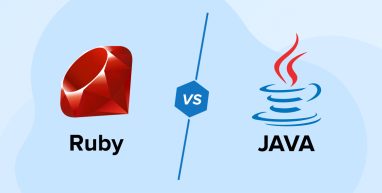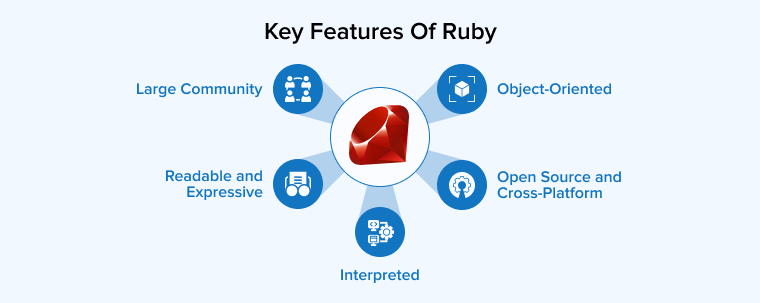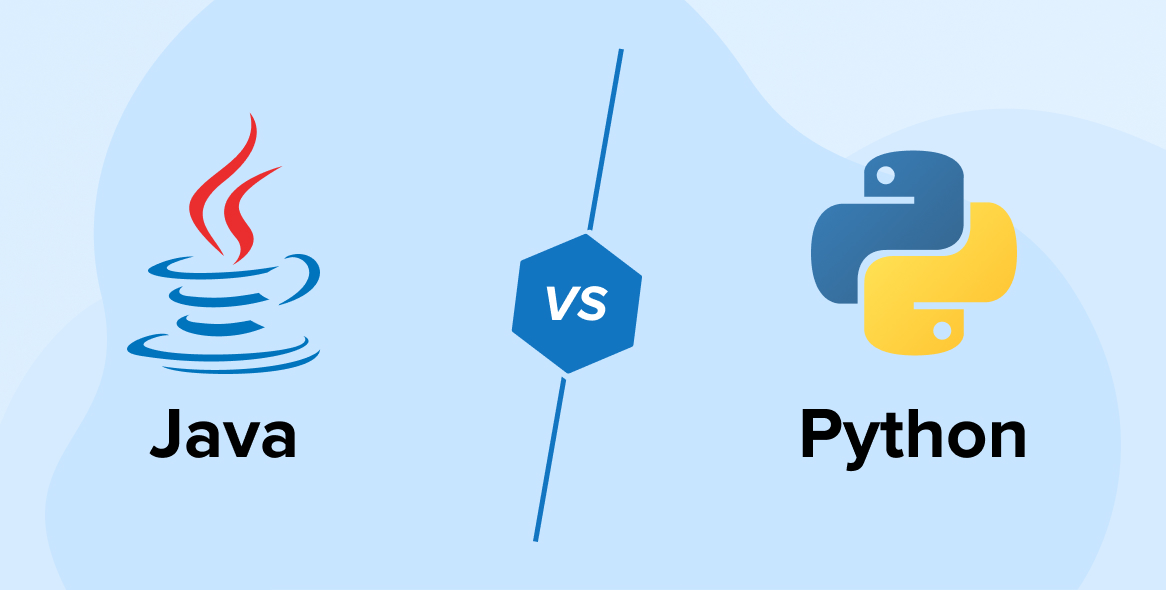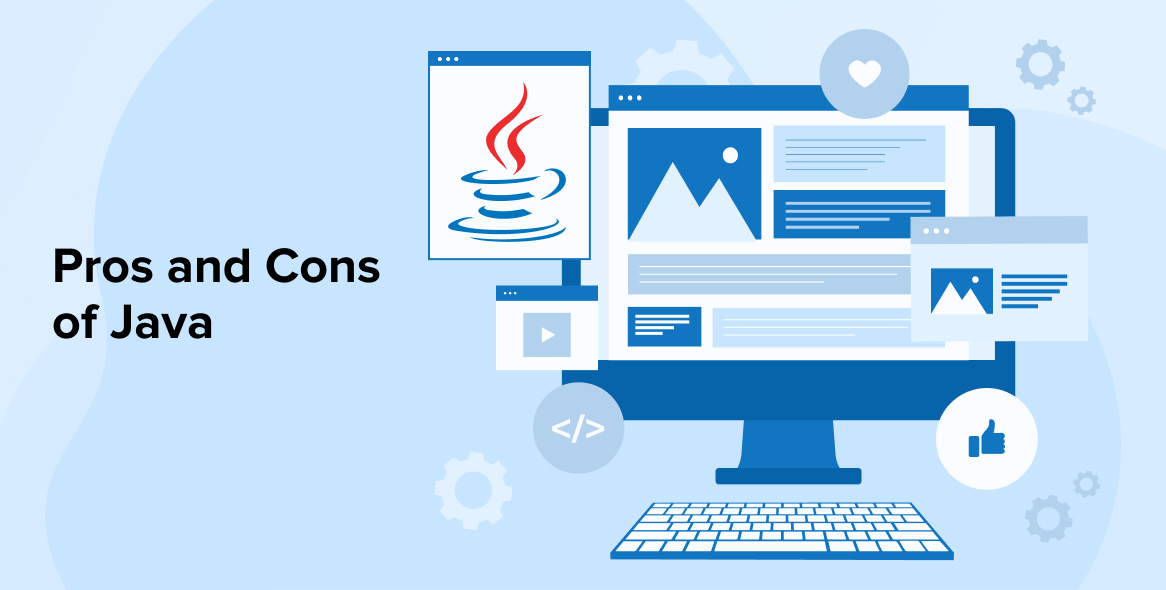
Ruby and Java are two of the most well-known languages in the industry, giving teams a wide range of options. This choice has to be carefully deliberated.
Both Java and Ruby are object-oriented languages, but while they have certain things in common, those distinctions could either make or break your development outcome.
This article will examine the similarities and distinctions between Ruby vs Java, in addition to its features, benefits, and drawbacks. A few simple pointers on how to decide between various technologies will also be discussed.
1. Ruby Overview
Ruby is a free, open-source, and object-oriented programming language. Yukihiro Matsumoto constructed it in 1995. When it comes to developing cutting-edge online apps, Ruby is now a top contender. Engineers, programmers, and coders should go with this option.
Programmers may run many applications in parallel because of Ruby’s terse syntax and convenient features. This language shares many similarities with the popular scripting languages Perl and Python. Ruby code is natural-looking and simple to understand, and it offers high productivity.
Ruby’s many features, such as its beneficial mean procedures and factors, and its adherence to the Principle of Least Astonishment (POLA) indicate that the ruby language is designed to minimize frustration for users as well as programmers with prior knowledge.
1.1 Ruby Key Features

Here we will go over a few of the most crucial features of Ruby:
1. Open Source and Cross-Platform
Ruby is a popular Open-source platform. It is freely available for developers’ use. They can download it from the official website and can use it on any operating system.
2. Object-Oriented
In Ruby, every data type like numbers, strings, boolean values, and more is considered an object. This means that with the help of Ruby, developers can create classes, polymorphism, inheritance, and encapsulation easily for the app development process.
3. Readable and Expressive
With Ruby, developers can get clean and readable syntax that enables developers to understand the code easily for its maintenance.
4. Interpreted
Ruby is an interpreted scripting language, and its interpreter phrases the code and translates it into a language that is understood by the machine.
5. Large Community
Ruby programming language comes with a huge community of developers and various frameworks & libraries to work on.
1.2 Ruby: Pros and Cons
Ruby has both its advantages and disadvantages. You must know both before you pick your language. Let’s look at some pros and cons of Ruby.
1. Pros
- Easy to Learn: Ruby is an excellent language for beginners due to its easy-to-understand grammar.
- Flexible: Ruby’s flexibility stems from its acceptance of a wide variety of programming paradigms.
- Rapid Development and Faster Time-to-Market: When combined with Ruby on Rails, which significantly eliminates the code and accelerates the whole development process, Ruby is the most suitable programming language for creating web-based applications.
- Ruby on Rails: This well-known web framework simplifies the construction of sophisticated online applications.
- Facilitates a Clean Code: Developers are limited to Ruby’s non-judgmental approach to coding due to the language’s nature. While some may find this to be a drawback, the Ruby community as a whole sees it as a strength that helps promote clean code and frees up time for teams to concentrate on unique features, flexible user interfaces, and engaging interactions.
2. Cons
- Non-Opinionated: Programmers who are used to the rigorous rules of other languages will have to get used to the fact that this one has none.
- Performance: Ruby is sometimes less speedy than other languages like Java and C++.
- Popularity: Even while Ruby’s popularity is growing, it is still not as commonly used as other languages, which might limit your employment options.
1.3 When to Use Ruby?
Ruby, thanks to its robust infrastructure, is the language of choice for modern web development. However, RoR is not a magic bullet that can fix all problems. But it works best for new businesses that meet certain criteria:
- The customer’s needs are the sole inspiration for your concept.
- As of yet, there is no set idea for the product.
- The time span is brief.
- There will likely be several iterations of the project’s scope and usefulness.
- Swift iteration.
- Any commercial or industrial field.
- Modest to moderate-sized apps.
2. Java Overview
Java is an object-oriented programming language that has earned a reputation as a powerful platform for large-scale applications. It was created in 1995 by a group led by James Gosling at Sun Microsystems (later bought by Oracle). Its syntax resembles C and C++, from which it drew inspiration.
Java code is designed with portability in mind; programs written in Java may be executed on any platform that supports it without being recompiled. When it comes to high-end, memory-intensive systems, software developers often look to Java as a top choice. Many popular java development services are adopted by companies including Amazon, Netflix, Google, Uber, and Pinterest.
2.1 Java Key Features
Here we will go over a few of the most crucial features of Java:

1. Simple and Easy to Learn
Java is an easy-to-learn programming language as its syntax is designed to be simple. And as it is similar to C# and C++, developers who know these languages can effortlessly work with Java.
2. Object-Oriented
Java is an object-oriented language which means that it uses objects and classes. It promotes approaches like reusability, modularity, and more.
3. Platform-Independent
Java is platform-independent which means that it follows a principle called “write once, run anywhere”. This approach enables developers to create seamless apps.
4. Robust and Secure
It is a programming language that prioritizes reliability and robustness. With features like strong memory management and automatic garbage collection, Java enables developers to create apps with reduced crash chances.
2.2 Java: Pros and Cons
Similarly to Ruby, let us also find out the pros and cons of Java as well:
1. Pros:
- Platform Independent: The phrase “Write Once, Run Anywhere” describes this concept well.
- Control of Memories Mechanically: Memory management in Java is fully automated. The requirement for hand-crafted memory management on the part of programmers is therefore removed. Improved Java application stability and reliability is the outcome of the language’s usage of a garbage collector to reclaim memory that has been abandoned.
- Multithreading: Because of Java’s capabilities for multithreading, Java-based programs may do many tasks simultaneously. Thanks to multithreading, Java systems can make better use of their processors, making them faster and more responsive.
- Strong Libraries: When it comes to programming libraries, Java is like an endless banquet. This means that Java offers inbuilt libraries and functions that enable developers to create applications using the latest approaches like AI, Big Data, and IoT. Java also provides platform independence and security for app development.
- Standard for Enterprise Computing: In business computing, Java is the gold standard. It is an established technology for big and complicated systems, but it may be utilized in a wide variety of products (for example, web apps and bespoke software).
2. Cons
- Verbose Syntax: The code is less readable because of Java’s verbosity, which makes the code more explicit. Java’s simple syntax comes at the expense of complex programs and drawn-out justifications.
- Initialization Lags: When compared to other native languages, including C and C++, Java’s memory consumption is high and its performance is low. This occurs because the Java virtual machine (JVM) performs an extra round of compilation and abstraction. Its slow performance can be attributed in part to the garbage collector, which uses up extra processing power.
- Licensing of the Java Standard Edition: There are a lot of open-source, free programming languages available to developers nowadays. Even so, Oracle has stated that they would be imposing the license of the Java Standard Edition, which is a major setback for businesses looking for a cost-effective choice in software development.
2.3 When to Use Java?
Evidently, Ruby isn’t as feature-rich as Java, but that’s not a compelling reason to choose Java. Big data products and apps that require a large number of users and a significant volume of traffic are prime targets for this language. Creating apps for the web is not where Java shines. Despite its widespread use, only a fraction of websites employ it to create their applications. If your startup is involved with any of the following, Java is a good fit:
- Heavy on memory consumption and architectural complexity.
- Product with a large volume and safety standards.
- Several nearby systems, such as mainframe back-ends, databases, peer web services, background batch-processing systems, etc., must interact with one another.
- Time and materials are not a constraint.
- You are the administrator of your own server.
The truth is that Ruby is currently dominating the web app industry, with Java far behind. The language’s lengthy growth time and verbosity are deterrents, especially for new businesses. Java, on the other hand, is a stable and potent technology that can be relied upon to produce something robust, complicated, readily scalable, and error-free.
3. Ruby vs Java: Tabular Comparison
| Key Factors | Ruby | Java |
|---|---|---|
| Type | Dynamic, interpreted programming language | Static, compiled programming language |
| Syntax | Simple, yet sophisticated syntax. | Syntax that is both lengthy and direct. |
| Compilation | Language translation. | Languages that can be both compiled and interpreted. |
| Object Orientation | Pure | Hybrid |
| Frameworks | Sinatra, Hanami, and Ruby on Rails. | Spring, JSF, and GWT. |
| Best Suited for | Building and programming websites. | Applications for the computer, smartphone, and tablet. |
| Learning Curve | Quick to pick up and understand. | Easy learning curve. |
4. Key Differences: Ruby Vs Java
When talking about two prime languages, it’s vital to know the differences between them to figure out better. Here we will discuss the differences between Ruby and Java.
4.1 Syntax
The syntax is a major differentiator between Ruby vs Java. Ruby is unique among programming languages because of its easy-to-understand syntax, which sounds more like normal language and is intended to be as intuitive as possible for users.
However, Java’s more complicated grammar might be off-putting to newcomers. However, once you get the hang of things, Java is a highly effective language for developing complex software.
Let’s check the simple Hello World code syntax to get a clear idea.
In Java,
class Hello { static public void main() { System.out.println("Hello World"); } } |
In ROR,
puts "Hello World" |
4.2 Type Checking
When comparing Ruby with Java, type checking is where the two languages diverge greatly. Since Ruby is a dynamic language, the type of a variable is computed at runtime. There is no requirement to define a variable’s type prior to using it, making Ruby exceptionally versatile and user-friendly. Java, in the opposite situation, is statically typed, thus you have to declare your variable before you can use it. Java is more stringent than Ruby because it requires the declaration of the types of all variables prior to their use.
Lets see an example in Java:
import java.util.*; public class CheckDataType { public static void main(String args[]) { int x; Scanner sc = new Scanner(System.in); x = sc.nextInt(); String str = sc.nextLine(); sc.close(); System.out.println(x + " is of type " + ((Object)x).getClass().getSimpleName()); System.out.println(str + " is of type " + str.getClass().getSimpleName()); } } |
Output:

In Ruby,
x = "Hello World" y = 10 puts "The class of x is #{x.class}" puts "The class of y is #{y.class}" |
Output:

4.3 Scope of Use
Both are built with flexibility in mind, making them suitable for a wide range of applications. This includes anything from web apps and servers to low-level system utilities, image recognition engines, and a wide variety of software tools. Ruby and Java are two extremely distinct programming languages with very diverse applications. The elegant syntax is currently most commonly linked with the Ruby programming language and its web application framework, Ruby on Rails. In addition, you may read several negative articles in which the author or authors assert that RoR is a separate language from Ruby. Rails’ immense popularity, however, should not be mistaken for a lack of appreciation for its underlying language, which has been used in a wide variety of other interesting endeavors.
Java has a wide range of applications, from native Android apps such as Kickstarter and FastHub to server apps in the financial services and banking sectors. Big names like Barclays and Standard Chartered use Java for their front and back office. In a nutshell, Java dominates the programming world.
4.4 Performance
Any technology can suffer from the fundamental problem of having subpar performance. Only in relation to a greater or worse value can this one be defined. When comparing Ruby’s performance to that of Java, Ruby comes out on top. Ruby is quicker than Java because it is easier to use. Ruby code may be updated dynamically, while its rivals require byte code generation before execution. While Ruby excels at tiny jobs, Java is able to recover from much larger processing demands. It improves with practice on the same problems again and over. In this case, I think a draw in terms of performance is fair.

5. Key Similarities: Ruby Vs Java
As we already discussed the differences, now, it’s time to look at some of the key similarities between Ruby and Java.
5.1 Built-in Security Features
The internet is overflowing with statements that both Ruby and Java are secure programming languages. In this case, a disclaimer is necessary. No programming language can guarantee the safety of the programs written in it.
The systems we are contrasting, however, do provide unique benefits that make it easier to sidestep standard vulnerabilities. Java, on the other hand, doesn’t use pointers—which can lead to memory leaks—and it offers a feature called Security Manager that lets you test programs in a contained environment.
5.2 Object-Oriented
Ruby and Java are both object-oriented, allowing developers to build their code and algorithms around the data they’re working with.
5.3 Rich Ecosystem of Libraries, Tools, and Resources
Both contain extensive ecosystems of supporting libraries, programs, and data. Java’s extensive library support allows platform builders to quickly and easily implement any imaginable feature. Ruby also has what it calls “gems,” which are like mini-tools and libraries that help with writing and managing specialized features (like accepting credit cards). You may think of JAR files as Java’s version of Ruby gems. Java classes, icons, and property files, together with other resources, may be deployed using this format.
5.4 Garbage Collection
It’s a fantastic method that frees up developers from memory management duties while yet allowing them to create a memory-safe system. Many high-level programming languages, including Ruby and Java, implement garbage collection automatically. These methods vary slightly in terms of the collectors they employ. Collectors in JVM come in several flavors, including the Ruby-exclusive mark-sweep algorithm as well as generational, incremental, and mark-compact variants.
6. Conclusion
There are benefits and drawbacks to learning every language. Choosing the correct technology is essential in this age of abundant programming languages, all of which have their own passionate group of programmers.
When it comes down to it, Java is the better choice for greater size, more sophisticated projects, notably enterprise-grade systems when comparing Ruby to Java. However, Ruby is more appropriate for web apps, particularly for startups and those still in the concept phase of their products.
We hope that after reading this comparison of Ruby versus Java, you will be able to make a more educated decision on which language to choose for a future project.






Interesting read comparing Ruby and Java! Having reviewed this comparison, I find myself now more furnished to decide which language to choose for my upcoming project.